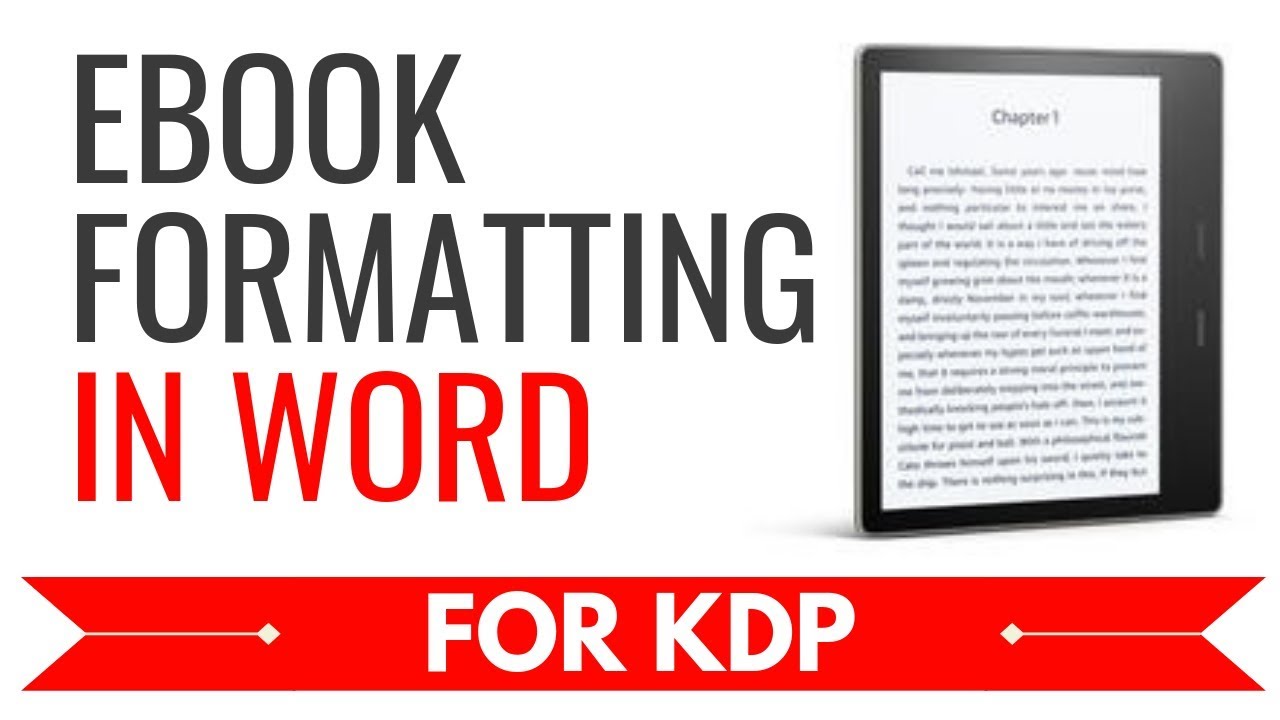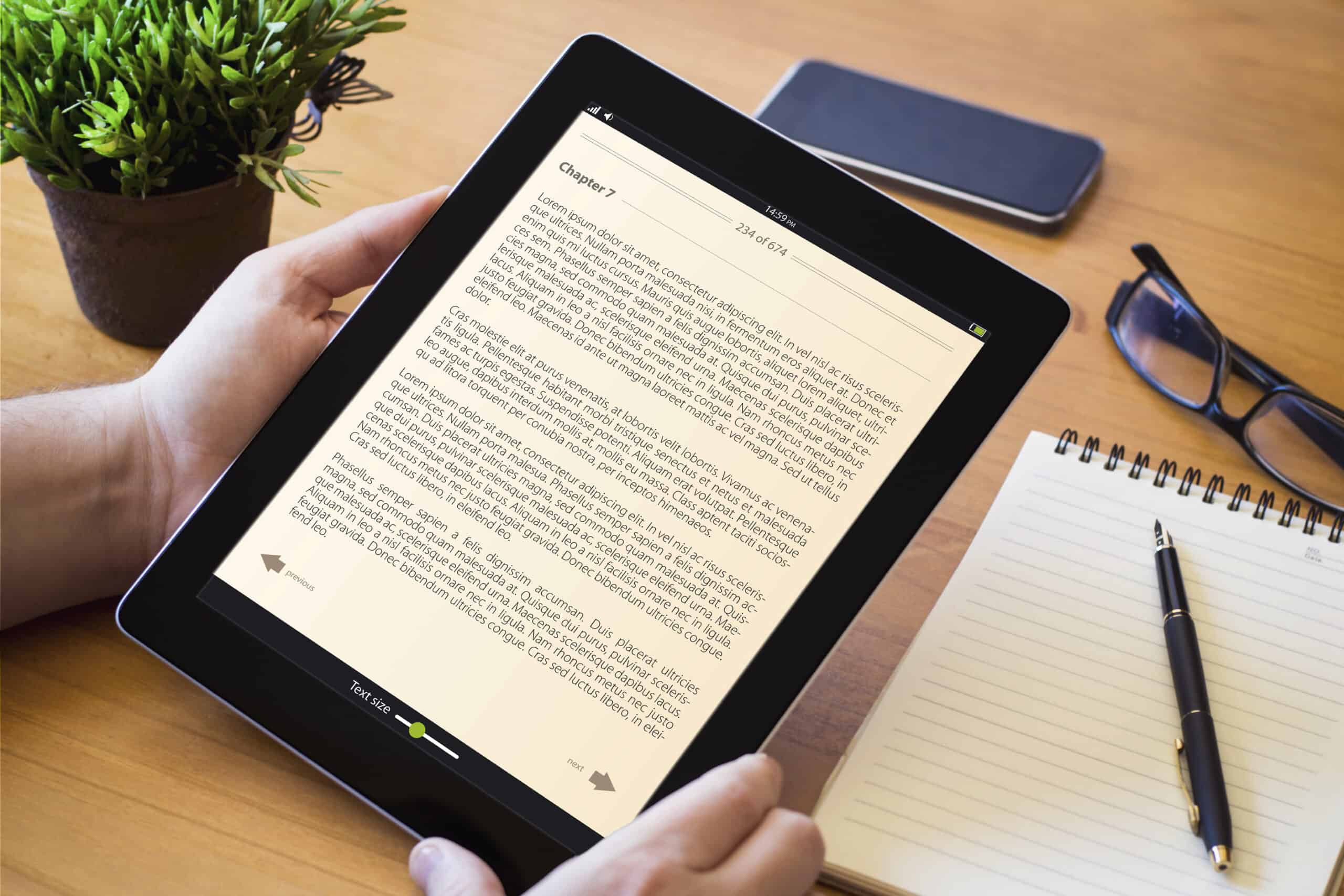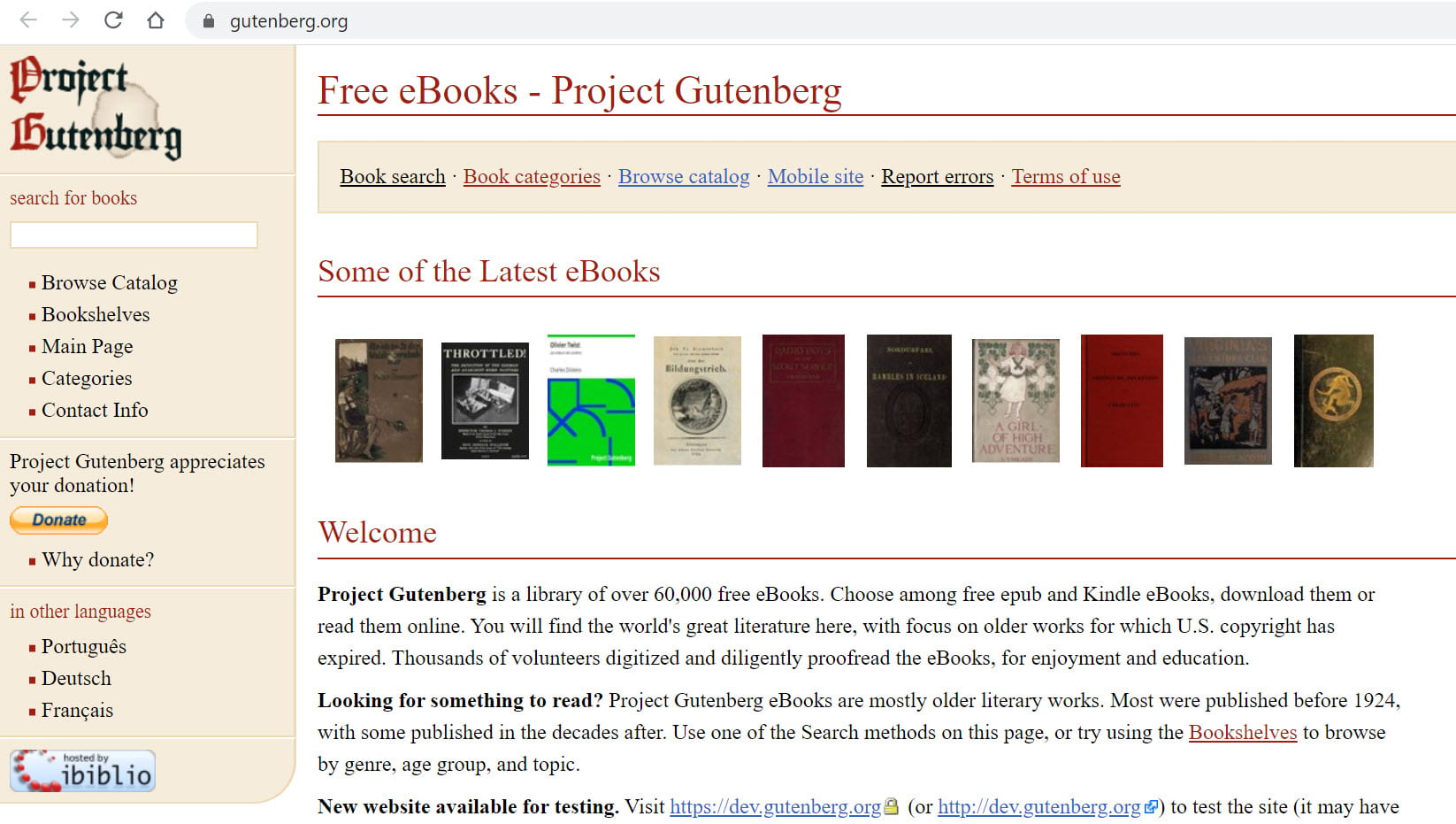Introduction
Formatting an eBook is crucial to ensure its accessibility, readability, and visual appeal. With the rising popularity of digital reading, it’s essential for writers and publishers to understand how to properly format their eBooks to provide an enjoyable reading experience for their audience.
While there are various eBook formats available, one of the most common tools used for formatting eBooks is Microsoft Word. In this article, we will explore the step-by-step process of formatting an eBook in Word, covering everything from structuring headings and customizing fonts to adding images and creating hyperlinks.
Proper eBook formatting not only enhances the overall aesthetics of the book but also improves functionality. It allows readers to navigate through the content seamlessly, find specific sections of interest, and adjust the text according to their reading preferences. Furthermore, a well-formatted eBook helps to maintain consistency and professionalism throughout the document.
This guide is suitable for both beginners who are new to eBook formatting and experienced writers looking to enhance their skills. Whether you’re self-publishing an eBook or preparing it for submission to a publishing platform, mastering the art of eBook formatting will ensure that your work stands out and engages readers.
So, grab a cup of coffee, fire up your laptop, and let’s dive into the world of eBook formatting in Word. In the following sections, we will explore each step in detail, providing you with the tools and knowledge to create a visually stunning and user-friendly eBook.
Understanding eBook Formatting
Formatting an eBook goes beyond the aesthetic aspects of design; it involves optimizing the content to be compatible with different reading devices and software. It’s crucial to understand the fundamentals of eBook formatting to ensure that your eBook is accessible and enjoyable for readers.
An eBook typically consists of various elements, such as headings, paragraphs, images, tables, and hyperlinks. These elements need to be structured and formatted correctly to maintain consistency and readability across different devices.
When formatting an eBook, it’s important to consider the following key aspects:
Compatibility:
eBooks are read on a variety of devices, including eReaders, tablets, smartphones, and computers. Therefore, it’s essential to utilize a format that is compatible with multiple platforms. The most common eBook format is ePub, which is widely supported by different eReader devices and software. Another popular format is Mobi, primarily used by Amazon Kindle devices.
Responsive Design:
eBooks need to adapt to different screen sizes and orientations. Readers may switch between portrait and landscape modes on their devices, so your eBook should be responsive to these changes. Ensure that your formatting allows for fluid text flow, adjustable font sizes, and flexible image placement to accommodate different reading preferences.
Table of Contents:
An essential element of eBook formatting is a well-structured table of contents (TOC). A TOC allows readers to navigate through the eBook easily and quickly find specific sections or chapters of interest. It also adds professionalism and convenience to the reading experience.
Typography and Fonts:
Choose appropriate fonts and font sizes for your eBook to ensure readability. Stick to standard fonts such as Arial, Times New Roman, or Calibri, as they are widely supported on various devices. Avoid decorative or complex fonts that might not render correctly on different screens.
Images and Graphics:
Including images and graphics can enhance the visual appeal of your eBook. However, it’s crucial to optimize the images for digital viewing, ensuring that they are of high quality but do not significantly increase the file size. Additionally, ensure that the images are properly aligned and positioned within the text.
By understanding these fundamental aspects of eBook formatting, you’ll be better equipped to create a well-structured and visually appealing eBook. In the following sections, we will delve into the step-by-step process of formatting an eBook in Word, covering each aspect in detail.
Setting up the Document
Before delving into the actual formatting process, it’s important to set up the document correctly in Microsoft Word to ensure a smooth and efficient eBook formatting experience.
Page Size and Orientation:
Start by selecting the appropriate page size and orientation for your eBook. For most eBooks, a standard page size of 6 x 9 inches works well. You can adjust the page size by going to the “Layout” tab in Word and selecting “Size.” Additionally, consider the orientation of your eBook. Most eBooks are in portrait orientation, but if your content requires a landscape format, simply adjust it accordingly.
Margins:
Next, set the margins for your eBook. It’s recommended to choose a consistent margin size on all sides to maintain a balanced layout. Standard margin sizes for eBooks are typically around 0.5 to 1 inch. To adjust the margins in Word, go to the “Layout” tab, click on “Margins,” and select the desired margin size.
Headers and Footers:
Headers and footers are optional in eBooks. If you choose to include them, make sure they are not intrusive and do not obstruct the main content. Headers and footers can be utilized for information such as chapter titles, author name, or page numbers. To add headers and footers in Word, go to the “Insert” tab, click on “Header” or “Footer,” and choose the desired format.
Page Numbers:
For eBooks, page numbering is not as critical as in printed books. However, you may still choose to include page numbers for reference purposes. To add page numbers in Word, go to the “Insert” tab, click on “Page Number,” and customize the format and positioning according to your preference.
Save and Backup:
It’s essential to frequently save your eBook document throughout the formatting process to avoid losing any progress. Additionally, consider creating backup copies of your eBook document in case of any unexpected issues or technical glitches.
By properly setting up your document in Microsoft Word, you establish a solid foundation for the eBook formatting process. With the document structure in place, you’re now ready to move on to formatting the individual elements of your eBook, such as the title page, table of contents, headings, fonts, images, and more.
Formatting the Title Page
The title page is the first impression that readers have of your eBook, so it’s essential to format it in a visually appealing and professional manner. The title page typically includes the book title, subtitle (if applicable), author name, and any additional relevant information.
Title and Subtitle:
Choose a clear and captivating title for your eBook that accurately represents its content. If your eBook has a subtitle, ensure that it complements and enhances the main title. Consider using a larger font size or different font style to make the title and subtitle stand out on the page.
Author Name:
Add your name as the author of the eBook. You can position it below the title or on a separate line, depending on your design preference. Make sure the font size and style are consistent with the title and subtitle.
Additional Information:
Depending on the nature of your eBook, you may want to include additional information on the title page, such as a series title, edition number, publisher name, or copyright information. Ensure that this information is presented clearly and is aligned with the rest of the content on the title page.
Aesthetics and Alignment:
Pay attention to the overall aesthetics of the title page. Choose a visually pleasing font for the title and author name, ensuring that it matches the theme and genre of the eBook. Experiment with different font sizes, styles, and alignments to create a balanced and visually appealing design.
Cover Image:
If you have a cover image for your eBook, consider placing it on the title page. The cover image should be high-resolution and eye-catching. Ensure that the image is aligned with the other elements on the page and does not overshadow the title or author name.
Formatting Tips:
Here are some additional tips to keep in mind when formatting the title page:
- Keep the design clean and uncluttered
- Avoid using too many different font styles or colors
- Consider using bold or italicized font for emphasis
- Double-check the spelling and formatting of all information on the title page
Remember, the title page sets the tone for your eBook, so ensure that it reflects the quality and professionalism of your work. Once you have formatted the title page, you can move on to creating the table of contents and structuring the headings and subheadings to further enhance the organization and readability of your eBook.
Structuring Headings and Subheadings
Structuring headings and subheadings in your eBook is essential to provide a clear and hierarchical organization of your content. Headings and subheadings not only help readers quickly navigate through the eBook but also improve readability and make the content more scannable.
Hierarchy and Consistency:
When structuring headings and subheadings, it’s crucial to establish a clear hierarchy. Use different levels of headings to indicate sections, chapters, and subtopics. This hierarchy helps readers understand the overall organization of the eBook and easily locate specific information. Maintain consistency in the formatting of headings, such as font style, size, and alignment, throughout the eBook.
Formatting Styles:
There are different formatting styles you can use to differentiate headings and subheadings. Common styles include using larger font sizes, bold or italicized text, all capital letters, or a different font color. Choose a formatting style that aligns with the overall design of your eBook and makes the headings stand out without being too distracting.
Chapter Titles:
Chapter titles play a crucial role in dividing your eBook into coherent sections. They provide readers with a clear indication of the topic or theme covered in each chapter. Consider using a larger font size or a different font style for chapter titles to make them visually distinct.
Parallel Structure:
Maintain a parallel structure in your headings and subheadings. This means using a consistent grammatical structure across the hierarchy. For example, if your main heading starts with a verb, ensure that all subheadings also start with verbs. This makes the structure more professional and easy to follow.
Numbering or Bullets:
Depending on the style and organization of your eBook, you may choose to use numbered headings (1, 2, 3) or bullet points (•) for your subheadings. Numbered headings are useful when presenting a structured and sequential order of information, such as in tutorials or step-by-step guides. Bullet points work well for listing items, tips, or ideas.
Previewing and Adjusting:
Preview your eBook to ensure that the headings and subheadings are easy to read and distinguishable from the main text. Adjust the formatting or hierarchy if necessary to improve clarity and readability.
By structuring headings and subheadings effectively, you create a well-organized eBook that allows readers to navigate through your content effortlessly. In the next section, we will explore how to customize fonts and text to further enhance the readability and visual appeal of your eBook.
Customizing Fonts and Text
Customizing fonts and text in your eBook is an important aspect of formatting that can greatly impact readability and visual appeal. By carefully selecting and formatting fonts, you can enhance the overall reading experience and convey the desired tone and style of your content.
Font Selection:
Choose fonts that are easy to read on digital screens and compatible with various devices. Stick to standard fonts like Arial, Times New Roman, or Calibri, as they are commonly supported and widely recognized. Avoid using decorative or complex fonts that may be challenging to read or render inconsistently on different devices.
Font Size:
Ensure that the font size is comfortable for reading on screens of different sizes. A font size between 10 and 12 points is generally recommended for body text in eBooks. However, consider adjusting the font size based on the specific needs of your content and target audience. For headings and subheadings, you can use larger font sizes to make them stand out.
Font Styles:
Utilize font styles such as bold, italic, or underline to emphasize or highlight specific words or phrases. Use these styles sparingly and purposefully to avoid overwhelming the reader. For instance, consider using bold for headings or subheadings and italics for book titles or foreign words.
Text Alignment:
Choose a text alignment that suits your eBook design and reading preferences. Common options include left alignment, justified alignment, or centered alignment. Consider the readability and aesthetics of the text when making this decision. Keep in mind that justified alignment may sometimes result in uneven spacing between words, so carefully review the text after aligning.
Line Spacing:
Optimize line spacing to ensure comfortable reading. A line spacing of 1.5 or 2 is generally recommended for body text, allowing sufficient space between lines. Avoid using single spacing, as it can make the text appear cramped on smaller screens. However, adjust the line spacing based on the fonts and font sizes you choose to maintain readability.
Highlighting Text:
When there are important quotes, keywords, or definitions in your eBook, consider using text highlighting to make them stand out. This can include using a different font color, shading the background of the text, or underlining the text. However, use these highlighting techniques sparingly to avoid distracting the reader.
Consistency:
Maintaining consistency in font styles, sizes, and formatting throughout your eBook is crucial. This enhances readability and gives a polished and professional look to your content. Create a style guide for your eBook and ensure that all headings, subheadings, body text, and other text elements adhere to the defined guidelines.
By customizing fonts and text in your eBook, you can create a visually pleasing and easily readable document. The next section will discuss how to insert images and graphics, adding another dimension to your eBook formatting.
Inserting Images and Graphics
Adding images and graphics to your eBook can greatly enhance its visual appeal and engage readers on a deeper level. Whether you’re including illustrations, charts, diagrams, or photographs, properly inserting and formatting visual elements is essential for an effective and visually appealing eBook.
Image Selection:
Choose high-quality images that are relevant to the content and align with the overall theme of your eBook. Consider using professional photographs, illustrations, or graphics that enhance the understanding and visual appeal of your text. Ensure that the images are not copyrighted or obtain appropriate permissions if necessary.
Image Format:
Optimize your images for digital viewing by using appropriate file formats such as JPEG, PNG, or GIF. These formats are widely supported and provide good quality while keeping the file size relatively small. Avoid using uncompressed image formats, such as BMP or TIFF, as they can significantly increase the eBook’s file size.
Image Placement:
Place the images in positions that complement the surrounding text and enhance the reader’s understanding. Ensure that the images are aligned properly with the text and do not disrupt the natural flow of the eBook. Consider positioning the images to the left or right of the text or using them as full-page illustrations, depending on the context and design of your eBook.
Image Captions:
Consider adding captions to your images to provide additional context or explanation. Captions can be placed directly below the image or on the side to avoid obstructing the main text. Use a font size and style that is consistent with the rest of the eBook to maintain a cohesive visual aesthetic.
Alt Text:
Include alternative text (alt text) for your images. Alt text is a brief description of the image that is read aloud by screen readers for visually impaired readers. It is also helpful for search engines to understand the content of your image. Use descriptive and concise language to accurately convey the visual information and context of the image.
Graphic Formatting:
If you’re including graphs or charts in your eBook, ensure that they are clear, legible, and well-formatted. Use consistent color schemes, font styles, and data labels in your graphics to maintain coherence and readability. Make sure that any annotations or labels are easy to read and understand.
Image Compression:
Compress your images to reduce file size without sacrificing quality. This helps in optimizing the eBook’s loading time and compatibility with different eReader devices. There are various image compression tools available online that can effectively reduce the file size while preserving the visual quality of the images.
By effectively inserting and formatting images and graphics in your eBook, you can enhance the visual experience for readers and provide a more engaging and immersive reading environment. In the next section, we will explore how to create hyperlinks within your eBook, enabling readers to navigate easily to external resources or within the eBook itself.
Creating Hyperlinks
Hyperlinks are a powerful tool that allows readers to navigate through your eBook seamlessly and access external resources or specific sections within the eBook itself. By strategically incorporating hyperlinks, you can provide additional value to your readers and improve their overall reading experience.
Linking to External Resources:
If your eBook references external websites, articles, or documents, you can create hyperlinks that direct readers to these sources. This allows readers to easily access additional information or explore related content. To create an external hyperlink, select the text or image in your eBook, right-click, choose “Hyperlink,” and enter the URL of the external resource.
Linking Within the eBook:
Creating internal hyperlinks allows readers to navigate between different sections, chapters, or subsections within your eBook. This enhances the accessibility and usability of the eBook and enables readers to quickly jump to specific content of interest. To create an internal hyperlink, select the text or image you want to link, right-click, choose “Hyperlink,” and select the specific location within the document.
Table of Contents Links:
The table of contents (TOC) is an essential navigation tool in an eBook. By creating hyperlinks from the TOC to the relevant sections or chapters in your eBook, readers can easily jump to specific parts without scrolling through the entire document. To create a TOC hyperlink, select the text in the TOC, right-click, choose “Hyperlink,” and select the location within the eBook.
Formatting Hyperlinks:
Consider formatting hyperlinks differently from the regular text to make them easily recognizable to readers. Underlining the hyperlinked text or using a different font color can clearly distinguish it from the rest of the content. Consistency in hyperlink formatting throughout the eBook provides a cohesive and professional look.
Testing and Verifying:
After creating hyperlinks, it’s critical to test and verify that they function correctly. Ensure that the hyperlinks direct readers to the intended resources or sections and that they work across different devices and eBook platforms. Test the hyperlinks before publishing your eBook to prevent broken or non-functional links.
Hyperlink Best Practices:
Here are a few best practices to keep in mind when creating hyperlinks:
- Use descriptive anchor text that clearly indicates the destination of the hyperlink
- Avoid using generic phrases like “click here” as anchor text
- Ensure that the linked resources are relevant and provide value to the reader
- Regularly check the hyperlinks to ensure they are not broken or outdated
By incorporating hyperlinks strategically throughout your eBook, you can enhance its interactivity and provide readers with easy access to additional resources and relevant sections. In the next section, we will explore how to incorporate bulleted and numbered lists to improve readability and organization in your eBook.
Incorporating Bulleted and Numbered Lists
Bulleted and numbered lists are valuable formatting tools that improve readability, organize information, and enhance the overall structure of your eBook. By incorporating these lists effectively, you can make your content easier to grasp, highlight key points, and improve the flow of information for your readers.
Bulleted Lists:
Bulleted lists are ideal for presenting information in a concise and easy-to-follow format. They are particularly useful for presenting non-sequential items, ideas, or steps. To create a bulleted list, simply start a new line and use a bullet (•) or a different symbol to indicate each item. Keep the bullet points brief and use parallel grammatical structure for consistent formatting.
Numbered Lists:
Numbered lists are useful when presenting information in a specific order or sequence. They can be used for step-by-step instructions, chronological events, or hierarchical details. To create a numbered list, start a new line and use numbers or letters to indicate each item. Like bulleted lists, maintain a consistent grammatical structure throughout the numbered list.
Indentation and Alignment:
Indent the items in your lists to create visual separation from the surrounding text. This helps readers identify the list items easily. Additionally, align the text in your lists consistently to maintain a clean and organized appearance. You can align the text with the left margin or choose to align it with the surrounding paragraphs based on your eBook’s design and style.
Nesting Lists:
When presenting hierarchical information or subcategories within your lists, consider nesting lists to create a visual hierarchy. Nesting involves indenting sub-items under main items, indicating a relationship between them. This helps readers understand the structure and organization of the information more effectively.
Styling and Formatting:
Choose a visually appealing style for your bulleted and numbered lists to make them stand out. You can experiment with different bullet or numbering styles to match the theme or design of your eBook. Additionally, consider using bold or italic font styles for list items that need emphasis or highlight important information within the list.
Consistency and Readability:
Maintain consistency in the formatting and styling of your bulleted and numbered lists throughout the eBook. Consistent spacing, indentation, bullet styles, and alignment contribute to improved readability and professionalism. Regularly review and revise your lists to ensure clarity and coherence.
By effectively incorporating bulleted and numbered lists, you can improve the readability and organization of your eBook. In the next section, we will explore how to add footnotes and endnotes to provide additional context, explanations, or references within your eBook.
Adding Footnotes and Endnotes
Footnotes and endnotes are useful tools for providing additional context, explanations, or references in your eBook without disrupting the flow of the main text. They allow readers to access supplementary information without cluttering the page and provide a streamlined reading experience.
Differentiating Footnotes and Endnotes:
Footnotes and endnotes serve the same purpose, but their placement is different. Footnotes are placed at the bottom of the page where the corresponding reference appears, while endnotes are placed at the end of the eBook or the end of each chapter.
Adding Footnotes in Word:
To add a footnote in Word, place the cursor at the end of the word or sentence where you want to add the reference, go to the “References” tab, and click on “Insert Footnote.” This automatically adds a superscript number at the appropriate location of the text. You can then type the relevant information or reference at the bottom of the page.
Adding Endnotes in Word:
If you prefer to add endnotes instead of footnotes, go to the “References” tab in Word, click on “Insert Endnote,” and this will add a superscript number where the reference appears in the text. The corresponding endnote will then appear at the end of the eBook or the selected chapter, depending on your preference.
Formatting Footnotes and Endnotes:
Format the footnotes and endnotes consistently to maintain a professional appearance. Use a smaller font size for the references compared to the main text. Typically, a font size of around 2 points smaller than the body text works well. Ensure that the superscript numbers align correctly with the main text to avoid confusion.
Providing Context and Explanations:
Use footnotes and endnotes to provide additional context, explanations, or references for specific information in your eBook. This could include definitions, historical background, citations, or further reading suggestions. Keep the content concise and relevant to enhance the reader’s understanding of the main text.
Hyperlinked Notes:
Incorporate hyperlinks within your footnotes or endnotes to allow readers to easily navigate back and forth between the main text and the supplementary information. By hyperlinking the superscript numbers or the note itself, readers can click on the link to jump directly to the corresponding note and then return to the main text with ease.
Consistency and Proofreading:
Check the footnotes and endnotes for consistency and accuracy. Ensure that you use a consistent numbering system throughout the eBook and proofread the content to avoid any errors or inaccuracies. Regularly review and revise the footnotes and endnotes to maintain their relevance and coherence with the main text.
By incorporating footnotes and endnotes, you can provide additional information or references within your eBook without disrupting the reading experience. In the next section, we will explore how to highlight and format quotes to add emphasis and enhance the impact of your eBook.
Highlighting and Formatting Quotes
Effectively highlighting and formatting quotes in your eBook can add emphasis, provide visual interest, and enhance the impact of your content. Quotes play an essential role in supporting your ideas, lending credibility, and engaging readers. By employing proper formatting techniques, you can make quotes stand out and captivate your audience.
Block Quotes:
Block quotes are used for longer quotes that span multiple lines. They are typically indented from both sides and set apart from the main text. To create a block quote, start a new paragraph, indent the entire quote by about half an inch or more, and do not use quotation marks. Use a slightly smaller font size for block quotes to differentiate them from the regular text.
Quotation Marks:
For shorter quotes or to emphasize specific phrases within a sentence, use quotation marks. Surround the quoted text with double quotation marks (“”) or single quotation marks (”) to denote the quoted material. Ensure the quotation marks are formatted consistently throughout your eBook.
Formatting Styles:
Consider using formatting styles such as italics or bold to distinguish quoted text within your eBook. Italics are commonly used to emphasize words or phrases, while bold can make the quote more visually prominent. Carefully select the appropriate style based on the context and the desired effect.
Attribution and Citations:
Ensure that you provide proper attribution and citations for all quoted material in your eBook. This includes acknowledging the original author, the source of the quote, and any relevant publication details. Citing your sources not only adds credibility but also demonstrates intellectual honesty and respect for copyright laws.
Consistency and Readability:
Maintain consistency in the formatting of quotes throughout your eBook to create a cohesive visual experience for readers. Use the same formatting styles, quotation marks, and indentation for all quotes to avoid confusion or inconsistency. Ensure that the quoted text is easily readable, and the formatting does not hinder comprehension.
Contextual Alignment:
Consider the alignment and placement of quotes within your eBook. Ensure that the quotes are aligned with the surrounding text to maintain a clean and visually appealing layout. Adjust the spacing before and after the quotes to create visual separation from the rest of the text, making them more distinct.
Selecting Meaningful Quotes:
Choose quotes that are relevant, impactful, and enhance the understanding of your content. Focus on selecting quotes that support or challenge your arguments, provide expert opinions, or offer unique insights. Well-chosen quotes can resonate with readers and make your eBook more memorable.
By highlighting and formatting quotes effectively, you can add depth and strengthen the impact of your eBook. In the next section, we will explore how to create and apply paragraph styles to achieve a consistent and professional look throughout your eBook.
Creating Paragraph Styles
Creating consistent and well-defined paragraph styles in your eBook is essential for maintaining a professional and cohesive look throughout your content. By implementing paragraph styles effectively, you can easily apply consistent formatting, enhance readability, and save time when formatting your eBook.
Understanding Paragraph Styles:
Paragraph styles define the formatting attributes for different types of paragraphs in your eBook. These attributes include font size, font color, line spacing, alignment, and indentation. By creating and applying paragraph styles, you can ensure consistency and streamline the formatting process.
Creating Paragraph Styles in Word:
In Microsoft Word, you can create custom paragraph styles by going to the “Home” tab, clicking on the “Styles” group, and selecting “New Style.” You can then customize the style by choosing the desired formatting options and assigning a name. This allows you to easily apply the style to text throughout your eBook.
Defining Heading Styles:
Heading styles are essential for structuring and organizing your eBook. Create different styles for each level of headings, such as chapter titles, section headings, and subheadings. Customize the font size, color, and alignment to create a visual hierarchy that helps readers navigate and understand the structure of your eBook.
Body Text Style:
The body text style is applied to the main content of your eBook. Customize the font, size, and line spacing to ensure optimal readability. Avoid using decorative or complex fonts that may decrease legibility on different devices. Aim for a clean and professional look that enhances the reading experience.
Formatting Styles for Special Elements:
Create paragraph styles for special elements within your eBook, such as block quotes, captions, footnotes, or endnotes. Apply consistent formatting to these elements to maintain clarity and visual coherence throughout the content. Use different font styles, sizes, or alignment to differentiate them from the regular body text.
Applying Paragraph Styles:
Once you have created your paragraph styles, easily apply them to your eBook’s text. Select the desired text and choose the appropriate paragraph style from the “Styles” panel. This instantly applies the specified formatting to the selected text, ensuring consistency with the rest of the eBook.
Updating and Modifying Styles:
If you need to make changes to your paragraph styles, such as adjusting the font size or color, you can easily modify them. Simply update the style definition, and all instances of that style in your eBook will be automatically updated accordingly. This saves you time and effort spent on individually changing each paragraph.
Proofreading and Reviewing:
After applying paragraph styles, proofread and review your eBook to ensure that the formatting is consistent and that there are no discrepancies or inconsistencies. Check for any unintended style overrides that may have occurred during the formatting process to maintain the desired look and feel of the eBook.
By creating and applying paragraph styles effectively, you can achieve a consistent and professional appearance throughout your eBook. In the next section, we will explore the importance of thorough proofreading and editing to ensure the quality of your final product.
Proofreading and Editing
Proofreading and editing are crucial steps in the eBook publishing process to ensure the quality, accuracy, and professionalism of your final product. By thoroughly reviewing and refining your eBook, you can identify and correct any errors, improve clarity and readability, and deliver a polished reading experience for your audience.
Proofreading for Errors:
Start by carefully proofreading your eBook to identify and correct any typographical, spelling, or grammatical errors. Pay attention to things like punctuation, capitalization, homonyms, and verb tense consistency. Use editing tools such as spell checkers and grammar checkers, but remember that they are not infallible, so manual proofreading is essential.
Reading for Clarity and Flow:
Read your eBook from start to finish to ensure that the content flows smoothly and logically. Look for any awkward or unclear sentences, ambiguous statements, or repetitive information. Ensure that your ideas are presented in a coherent manner and that there is a logical progression from one section or chapter to another.
Checking Formatting and Layout:
Review the formatting and layout of your eBook to ensure consistency and a visually pleasing appearance. Check for correct alignment, spacing, indentation, and font styles. Pay attention to elements such as headers, footers, tables, graphics, and captions to ensure they are correctly positioned and visually coherent.
Verifying Hyperlinks and References:
Verify that all hyperlinks and references within your eBook are working correctly and leading to the intended destinations. Check both internal and external hyperlinks to ensure they direct readers to the right resources. Cross-reference any citations or sources mentioned in your eBook for accuracy and completeness.
Ensuring Consistency:
Maintain consistency throughout your eBook, both in terms of content and formatting. Check for consistent usage of headings, fonts, font sizes, styles, bullet points, and numbering. Ensure that any abbreviations, acronyms, or terminology used within the eBook are used consistently and explained when necessary.
Getting Feedback:
Consider seeking feedback from a trusted colleague, friend, or professional editor. Fresh eyes can help identify issues or offer valuable suggestions for improvement. Feedback can give you a new perspective and highlight areas that may need further attention or clarification.
Proofreading Multiple Times:
Proofreading and editing are iterative processes. It’s important to go through multiple rounds of reviewing and revising to catch any overlooked errors or areas in need of improvement. Take breaks between proofreading sessions to maintain focus and improve accuracy.
Final Quality Check:
Before publishing your eBook, perform a final quality check to ensure that all corrections and revisions have been accurately implemented. Review the eBook from start to finish one last time to ensure that it meets your standards of quality and professionalism.
By dedicating time and effort to thorough proofreading and editing, you can polish your eBook to perfection, ensuring that it is error-free, clear, consistent, and engaging for your readers. In the next section, we will explore the process of converting your eBook into various eBook formats for wider distribution.
Converting to eBook Formats
Once you have completed the content creation, formatting, and proofreading stages of your eBook, the final step is to convert it into eBook formats suitable for distribution. Converting your eBook allows it to be compatible with different eReaders, devices, and platforms, making it accessible to a wider audience. Here’s an overview of the conversion process:
Choose the eBook Format:
Consider the various eBook formats available and determine which ones best suit your needs. The most common eBook formats are ePub and Mobi. ePub is widely supported by most eReaders and devices, while Mobi is specifically used for Amazon Kindle devices. Choosing the right format ensures maximum compatibility with different reading platforms.
Export or Save as the Chosen Format:
Most word processing software, such as Microsoft Word, allows you to export or save your document in different eBook formats. Select the appropriate format and follow the software’s instructions to generate the eBook file. These files typically have the extension “.epub” or “.mobi” depending on the format chosen.
Validate the eBook File:
After the conversion, it’s important to validate the eBook file to ensure it meets the required standards for eBook distribution. Use eBook validation tools or services to check for any formatting or compatibility issues. These tools will identify errors or warnings that need to be corrected before publishing your eBook.
Ensure Responsive Design:
Check that your eBook format has a responsive design, meaning it adjusts and adapts to different screen sizes and orientations. This is particularly important for eBooks that will be read on various devices such as tablets and smartphones. Ensure that your eBook is visually appealing and readable across different screens and orientations.
Add Metadata:
Metadata is essential for categorizing and organizing eBooks. Include relevant information such as the title, author, publisher, genre, and a brief description of the eBook. This metadata helps search engines and eBook platforms to properly classify and index your eBook, making it easily discoverable by readers.
Distribute to eBook Platforms:
Once your eBook is properly converted and validated, it’s time to distribute it to various eBook platforms and marketplaces, such as Amazon Kindle Direct Publishing, Apple iBooks, Barnes & Noble Nook, or Google Play Books. Each platform has specific requirements and submission processes, so follow their guidelines for uploading and selling your eBook.
Test your eBook:
Before making your eBook available to the public, perform thorough testing on different devices and eReaders to ensure compatibility and functionality. Check that all the formatting, images, hyperlinks, and other interactive elements work as intended. This step helps identify any remaining issues that need to be resolved before publishing.
Publish and Promote:
Once you are fully satisfied with the conversion and testing, publish your eBook on the selected platforms. Promote and market your eBook through various channels, such as social media, author websites, book bloggers, and advertising platforms, to reach your target audience and generate wider visibility and sales.
By following the process of converting your eBook into suitable formats and distributing it on various platforms, you can make your content accessible to a broader audience and increase its reach and success. With your eBook now available to readers, you can focus on engaging with your audience and exploring further opportunities in the digital publishing world.
Conclusion
Creating and formatting an eBook requires careful attention to detail and an understanding of the elements that make for a polished and engaging reading experience. From structuring headings and subheadings to customizing fonts and styles, each aspect plays a crucial role in capturing the attention of readers and delivering your content effectively.
By setting up your document correctly, utilizing paragraph styles, and incorporating elements such as images, hyperlinks, and quotes, you can create an eBook that is visually appealing, interactive, and easy to navigate. Proofreading and editing the eBook are essential steps to ensure quality and accuracy, while converting it into different eBook formats makes it accessible to a wider audience.
Remember to engage with your readers by incorporating creativity, personality, and a human touch into your writing. This will help establish a connection and make your eBook more enjoyable to read. Additionally, continue to explore ways to promote and market your eBook through various channels to reach your desired audience and maximize its visibility.
As the world of digital publishing continues to evolve, it’s important to stay updated with the latest trends, technologies, and reader preferences. Keep refining your skills as an SEO writer, adapting to changes in search engine algorithms, and seeking out opportunities to further enhance your eBooks and increase their impact.
With a combination of expertise in formatting, SEO writing, and engaging storytelling, you have the tools to create compelling eBooks that not only rank well in search engines but also captivate and resonate with readers. So, embrace the power of SEO, deliver high-quality content, and always strive to exceed the expectations of your readers.

























